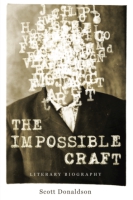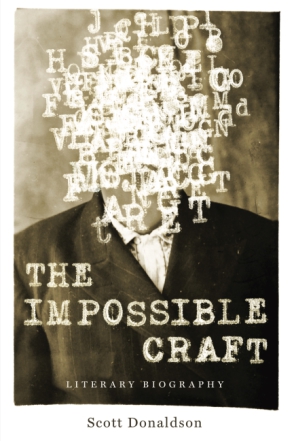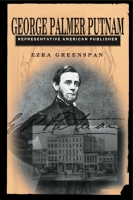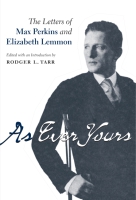The Impossible Craft
Literary Biography
Scott Donaldson
“What makes The Impossible Craft so satisfying is Mr. Donaldson’s willingness to address the nature of biography on many different levels. Those simply curious about how biographers work will get an education, and those who already know a good deal about biography will nevertheless find his case studies riveting. His book, in fact, is a model for what more literary critics should be doing.”
- Description
- Reviews
- Bio
- Table of Contents
- Sample Chapters
- Subjects
Donaldson provides readers with a highly readable insiders’ introduction to literary biography. He suggests how to conduct interviews, and what not to do during the process. He offers sound advice about how closely biographers should identify with their subjects. He examines the ethical obligations of the biographer, who must aim for the truth without unduly or unnecessarily causing discomfort or worse to survivors. He shows us why and how misinformation comes into existence and tends to persist over time. He describes “the mythical ideal biographer,” an imaginary creature of universal intelligence and myriad talents beyond the reach of any single human being. And he suggests how its very impossibility makes the goal of writing a biography that captures the personality of an author a challenge well worth pursuing.
“What makes The Impossible Craft so satisfying is Mr. Donaldson’s willingness to address the nature of biography on many different levels. Those simply curious about how biographers work will get an education, and those who already know a good deal about biography will nevertheless find his case studies riveting. His book, in fact, is a model for what more literary critics should be doing.”
“A captivating and intimate glimpse of the challenges and rewards of writing lives of novelists and poets.”
“Being a seasoned practitioner, Scott Donaldson understands the complexities, challenges, and delights of literary biography. This is a fine take on an ancient, often misunderstood, craft. A welcome addition to one of the least theorized of all genres.”
“There may not be another writer in America more qualified than Scott Donaldson to meditate on the agonies—and separate-peace victories—of the literary biographer. He has delivered a biography of biography-making, and he doesn't spare us his mistakes and regrets.”
“Scott Donaldson brings several decades of experience as a literary biographer to The Impossible Craft—a fascinating study of how and why biographies are written. How does a biographer develop a persona and a voice? How does a biographer deal with the literary heirs? Must the biographer like the subject? Is biography a craft, as the title of this book implies, or an art, or something else? Scott Donaldson has earned the right to have his say on all of these matters.”
“Scott Donaldson’s The Impossible Craft is a revealing, entertaining, and ultimately inspiring look at a literary form that too many readers assume is a simple matter of compiling chronologies and presenting dry facts dug up through research. In discussing the art of biography—in particular, literary biography, in which the subject isn’t just an important literary figure but the telling of the life subscribes to its own high standards of narrative craft and execution—Donaldson proves why he is regarded as a master of this genre. In exploring such nuts-and-bolts issues as the proprieties of interviewing and securing permissions, he offers practical advice to aspiring biographers. This book is so much more than a primer or how-to guide, however. Donaldson plumbs the dangers of overidentifying with one’s subject and of ramrodding a single thesis across a lifespan. He examines the ethical challenges of judging the relevance of details, of the repercussions of including unflattering information, and the consequences for one’s credibility of suppressing it. He assures us that biographers inevitably get some things wrong and that what they get right is sometimes serendipitous. He also tells us exactly what we shouldn’t expect biography to do.
“At the core of the book are case histories involving the writers Donaldson has spent his career studying. One brilliant section explores the behind-the-scenes rivalries and conflicting agendas that doomed Edwin Arlington Robinson’s first biographer, Hermann Hagedorn, to produce a pedestrian ‘life of . . .’ that may have stymied critical interest in a poet who didn’t deserve to fall out of fashion (or to have his name so often incorrectly cited as Edward). Another chapter examines how F. Scott Fitzgerald’s many biographers incrementally embellished upon the few certifiable facts known about Zelda’s 1924 “affair” with a French aviator to dramatize a central episode in the couple’s fabled romance. Finally, Donaldson returns twenty-five years later to the story of his own exasperating dealings with the estate of John Cheever over a project that nearly drove him out of the business. At once admitting mistakes and yet defending his turf, Donaldson shows how biography is always personal.
“Interwoven with autobiographical anecdotes and propelled by fascinating stories, The Impossible Craft explains why the writing of biographies is often as conflicted, emotionally fraught, and downright messy as the lives they document.”
“Donaldson’s book is a wonderfully engaging read, not only for biographers or would-be biographers but also for students and scholars of literature. It provides valuable context regarding the challenges and insights of biographical research and can broaden our understanding of biographical narrative and the literary voices we value.”
“While the autobiographical portions of The Impossible Craft are compelling enough, the parts that had me repeatedly reaching for my commonplace book (or rather clicking open the Word doc that has supplanted it) are those in which Donaldson undertakes a sort of tour d’horizon of the difficulties, weaknesses, hazards, and rewards of biography, and of who has memorably said what about them.”
“Books about the nature and practice of biography are rare. As such, this eminently readable and important book by a stellar biographer is uniquely instructive.”
“This well-written study belongs in the hands of every would-be or seasoned writer and every impassioned reader and teacher.”
Scott Donaldson ( 1928–2020) was an accomplished biographer and the Louise G. T. Cooley Professor of English at the College of William and Mary, emeritus. His publications include Fitzgerald and Hemingway: Works and Days (2009), Hemingway vs. Fitzgerald: The Rise and Fall of a Literary Friendship (1999), John Cheever: A Biography (1988), and Fool for Love: F. Scott Fitzgerald (1983). His Archibald MacLeish: An American Life (1992) won the Ambassador Book Award for biography.
Contents
Abbreviations
1 Beginnings
Biography: A Background Sketch
Becoming a Biographer
And Then I Wrote . . .
The Editor’s Hand: Hemingway
Fitzgerald and the Craft
The Amazing Archibald MacLeish
A Dual Biography of Fitz and Hem
Recovering Robinson
Other Chores, On to Fenton
2 Topics in Literary Biography
Fact and Fiction
Writers as Subjects
Ethical Issues
Sources: Letters
Sources: Interviews
3 The Impossible Craft
The Issue of Involvement
Trying to Capture Hemingway
The Mythical Ideal Biographer
What Biography Can’t Do
And Yet . . .
4 Case Studies
Telling Robinson’s Story: The Fight over a Poet’s Bones
Summer of ’24: Zelda’s Affair
Hemingway’s Battle with Biographers, 1949–1954
5 The Cheever Misadventure
Writing the Cheever
The Lawsuit
The Next Biography
Bibliography
Biography: A Background Sketch
The first biographies aimed to teach, on the assumption that the reader might learn by example from the lives of the great. Plutarch, as much a moralist as an historian, linked Greek and Roman figures in Parallel Lives, arranging them in tandem to illuminate their common virtues or, less often, failings. “Let us now praise famous men, and our fathers that begat us,” the author of Ecclesiastes counseled, and for the most part early biographers adopted that policy. In medieval times writers celebrated lives of the saints—not the whole life but a few incidents testifying to sanctity—as the genre drifted toward hagiography, shrouded in what Samuel Johnson called “a mist of panegyrick” (Garraty, 43, 54–55; Fruman).
The magisterial Dr. Johnson (1709–84) was himself a biographer, writing a life of the poet Richard Savage in his youth and the six-volume Lives of the Poets in his final years. Johnson rebelled against the high-minded accounts of the hagiographers, recommending instead that biographers depict “the minute details of daily life” as well as “those performances and incidents which produce vulgar greatness” (quoted in Holroyd, “How I Fell,” 98). That was exactly what his disciple James Boswell did in his masterly biography of Johnson. The much younger Boswell dogged the great man’s footsteps for years, recording just about everything that happened. When Johnson declaimed brilliantly of an evening, Boswell wrote about it. When Johnson drank too much, he wrote about that as well.
This kind of account went by the boards during the blight of Victorianism, when close friends or family members assumed the role of official biographer. They presented subjects in the noblest possible light. Lives were tidied up to remove any humanizing hints of indecency—certain things were not to be spoken of—and to exemplify qualities schoolchildren might aspire to. Sometimes these long and excessively eulogistic effusions ran to two or three volumes of life and letters.
The effect on literary biography was disastrous. “Suppression, distortion, evasion, and outright falsehood” abounded in lives of the English Romantic poets. De mortuis nil nisi bonum became the standard. Charles Cowden Clarke, Keats’s early mentor, maintained that no gentleman would ever knowingly publish anything that could give pain to a living person or reflect badly on the deceased. Wordsworth was furious when a biographer of Robert Burns revealed his drunkenness and sexual adventures, and enraged when Coleridge’s biographers disclosed his opium addiction and abandonment of his family. It was considered far better to portray William Blake as an “enthusiast” than to raise the issue of mental illness (Fruman).
The most sensational case was that of Lord Byron, a bisexual who committed incest, a radical in politics, and a foe of conventional religion. While in exile from England, Byron wrote his memoirs for posthumous publication. These proved so incendiary that Byron’s friends, gathered in the London offices of his publisher three days after the poet’s death, duly consigned them to the flames (Fruman).
Family members set about shining up the image of Shelley, whose sexual exploits, revolutionary politics, and irreligious views rivaled those of Byron. The first generation of survivors delayed access to such sensational matters until potential biographers dwindled into respectable Victorians willing to forget or to conceal. In the second generation, Lady Jane Shelley took over the task of idealizing her ancestor, and a feminized bloodless figure of the poet emerged in the accounts of those apologists who gained her approval. It remained for Richard Holmes, in 1974, to present Shelley as agitator, atheist, and apostle of free love as well as brilliant poetic innovator: a gifted man who embraced rebellion whatever its cost (Lee, 12–15).
Toward the end of the nineteenth century, historians tended to subordinate personal character and accomplishment to great cultural movements of the past. The importance of individual human beings was similarly challenged by the economic determinism of Karl Marx and the rise of naturalism. Then the disillusionment of World War I made the touched-up portraits of the Victorian era seem foolish, even wrong. Lytton Strachey’s influential Eminent Victorians (1918) introduced a new kind of debunking biography. In brief and incisive sketches of Cardinal Manning, Florence Nightingale, Thomas Arnold, and General Gordon, Strachey demonstrated the moral hypocrisy of the Victorians. “It is not the business of the biographer to be complimentary,” Strachey declared. “It is his business to lay bare the facts of the case as he understands them” (quoted in Skidelsky, 6). But not all the facts, for such an exhaustive recital would militate against the selectivity that art demanded.
With Freud, everything changed. Biographers still wrote about people of achievement, but with a more or less uncomfortable awareness—Freud’s ideas having pervaded the culture—that accomplishments derived from sublimated sex drives, that personalities were shaped in childhood, that everyone entertained fantasies. These concepts diminished the luster of the subject, as Freud felt they should. He had a lively interest in biography, and believed that his own case histories improved on the usual practice of the genre.
In his study of Leonardo da Vinci (1910), Freud argued that most biographers were “fixated on their heroes,” for whom they felt a special, and very likely infantile, affection. As a consequence they smoothed over the rough patches and presented cold, strange figures with little resemblance to human beings. They sacrificed “truth to an illusion,” abandoned “the opportunity of penetrating the most fascinating secrets of human nature,” and failed to solve “the riddle” of character, a task Freud regarded as “the first step in biography” (Ellmann, “Freud,” 261–62; Cassato, 1251). In later years, though, Freud began to doubt whether it was possible to decode the riddle, uncover the secret self, penetrate the hidden, locate what Leon Edel—author of the multivolume life of Henry James—called “the figure under the carpet.”
Sigmund Freud’s career overlapped with that of Lytton Strachey, and in 1928 the two men connected by correspondence. Strachey sent Freud a copy of his Elizabeth and Essex, a book which, unlike his previous work, manifestly owed a debt to psychoanalytic theory. It was far from Strachey’s best, however, and Freud replied with cautious praise. He congratulated Strachey for tracing the character of Queen Elizabeth back to her childhood and for touching “upon her most hidden motives with equal boldness and discretion.” At the same time, Freud acknowledged the tremendous barriers that all biography faced. “Our psychological analysis does not suffice [to divine men’s motives and the essence of their minds] even with those who are nearest to us in space and time, unless we can make them the object of years of the closest investigation, and even then it breaks down before the incompleteness of our knowledge and the clumsiness of our synthesis” (Storr, 73–74).
Freud expanded on the point in rejecting Arnold Zweig’s 1936 proposal to undertake a biography of himself. “To be a biographer,” he wrote Zweig, “you must tie yourself up in lies, concealments, hypocrisies, false colourings, and even in hiding a lack of understanding.” Freud may have been using overstatement as a way of evading Zweig. Instead he chose as his biographer the discreet Ernest Jones, who “skirted many of the issues that Freud would have dealt with in other men and, though a psychoanalyst, made no effort at psychoanalysis” (Ellmann, “Freud,” 260).
After Strachey, after Freud, the pendulum swung further away from Victorian reticence toward intimate revelation. Strachey himself, who had initiated the antireverential movement, became the subject of a two-volume biography (1967–68) by Michael Holroyd, who declared that he was doing “something entirely new”: giving prominent place to his subject’s love life and treating the subject of homosexuality “without any artificial veils of decorum” (quoted in Glendinning, 56).
A half century later, what was new with Holroyd has become commonplace. The veils have been lifted, leaving no taboo subjects. Cruelty to family, disloyalty to friends, dishonesty in finances: every human failing has become fair game for the poaching biographer. Gays and lesbians are outed, along with bisexuals and serial adulterers. Racial and ethnic prejudices are routinely revealed. So too is the abuse of alcohol and drugs, particularly widespread among literary figures. Were we to follow Sir Edmund Gosse’s early twentieth-century dictum against disclosing addiction to alcohol, Mark Schorer (biographer of Sinclair Lewis) pointed out, “what would the biographers of American writers have to write about?” (Schorer, 234). A valid point, yet in some recent cases the diligent debunker has seemed more interested in spreading disillusionment than in presenting a fair assessment of the subject.
Biography hence declined into what Joyce Carol Oates called “pathography,” the word borrowed from Freud. Books of that sort, she wrote, “so mercilessly expose their subjects, so relentlessly catalog their most private, vulnerable and least illuminating moments, as to divest them of all mystery save the crucial and unexplained: How did a distinguished body of work emerge from so undistinguished a life?” (quoted in Schlesinger, 36). How did the subjects manage to get out of bed in the morning, much less create wonderful novels and poems? (Kaplan, “Culture,” 6). Pathographers painted their pictures, warts and all, and sometimes added a few fake warts. Even when sticking to the facts, they often demeaned their subjects by attributing the worst possible motives to their behavior, as Lawrance Thompson consistently did in his embittered three-volume life of Robert Frost. Thompson had his reasons: he signed on early as Frost’s biographer, and waited decades for his chosen subject to do the decent thing and die. During the long interim, Thompson became increasingly disillusioned with Frost, changing from devoted admirer to dedicated foe—and even sexual rival.
Thompson was not alone in committing what John Updike characterized as the Judas biography, in which disciples, friends, and lovers attack the person—or the corpse—of a former mentor. Such cases bring to mind Oscar Wilde’s observation that every great man has disciples, but it is always Judas who writes the biography (Pearce, xiv). Among others, Updike cited the example of Paul Theroux. After a falling out with V. S. Naipaul, Theroux attributed “a host of racist, misogynistic, cruel and vain remarks” to his longtime literary guide in Sir Vidia’s Shadow (1998) (Updike, 28–29). Theroux argued in his defense that “the truest portrait of a writer can never be a study of virtue. . . . Any book that . . . invites the reader to see its subject as simple and lovable is a confidence trick” (Theroux, 39). But his suggestion—that by practicing their craft literary people necessarily leave the wounded in their wake—stretches credibility. Are there no admirable men and women among writers?
Contemporary literary biography has also been marked by its vast accumulation of detail. Not only did the writer in question shrink in stature as he or she was revealed to have been troubled by human failings at least as bad as the reader’s own, but knowing the mundane quotidian facts—whether she liked eggs for breakfast, and if he could break one hundred on the golf course—inspired a spurious “mateyness” (Skidelsky, 11) between subject and reader. This heaping up of insignificant material led to bad books of sash-weight heft, yet, as James Atlas argued, it was not “girth” alone but “pedantry” that doomed them: “the insistence—prevalent especially among academics—upon entering every fact, however insignificant, into the biographical ledger merely because it has been found” (Atlas, “Subject,” 25).
Despite such shortcomings, biographies have rarely been more popular than in recent times. People like to read about the failings of others, a somewhat distressing fact that has helped the present age become “a culture of biography,” according to Justin Kaplan, biographer of Mark Twain and Walt Whitman. Ideas and issues fade in importance, he observed in 1994, as we pay attention instead to “celebrity, personality, and anecdote.” At the low end of the scale lie supermarket scandal sheets and tell-all accounts of the disordered lives of the rich and famous. At the peak stands the occasional biography that, like Kaplan’s own, “explores the intersection of history, society, and individual experience, renders character in the round, tells a generously contexted story that has a beginning, middle, and end, and may even suggest a degree of social continuity and personal responsibility” (Kaplan, “Culture,” 1–3) and accomplishes these goals without moralizing.
The path toward production of such estimable books has hardly grown smoother. Malcolm Bradbury observed in a 1988 essay that we were living simultaneously in “the age of the Literary Life” and “the age of the Death of the Author”—“the age of the author studied, pursued, celebrated, and hyped, and the age of the author denied and eliminated, airbrushed from the world of writing” (Bradbury, 132–33). The “Death of the Author” had its origin in the recondite recesses of literary theory. At the middle of the twentieth century, the New Critics mandated “close reading” of fiction and poetry accompanied by a studied disregard for their creators and the times they lived in. They were succeeded by the Deconstructionists, who declared that the text was everything, and the author who produced it—in Michel Foucault’s phrase—merely “the dead man in the game of writing” (quoted in Halperin, 149). In such a theoretical universe, “the reader” became more important than either author or text, for he or she alone could invest any given text with meaning.
Taken cumulatively, these theories called into question literary biography’s central justification: that knowledge of the life throws light on the work and vice versa. Fortunately, neither the New Criticism nor postmodern Deconstructionism has spread its influence far beyond the halls of academe. Dedicated professional craftsmen continue to write biographies for an audience of interested readers. That will not stop until humans lose their curiosity about each other, and about the way they lived and loved and did their work.
Also of Interest
Mailing List
Subscribe to our mailing list and be notified about new titles, journals and catalogs.






